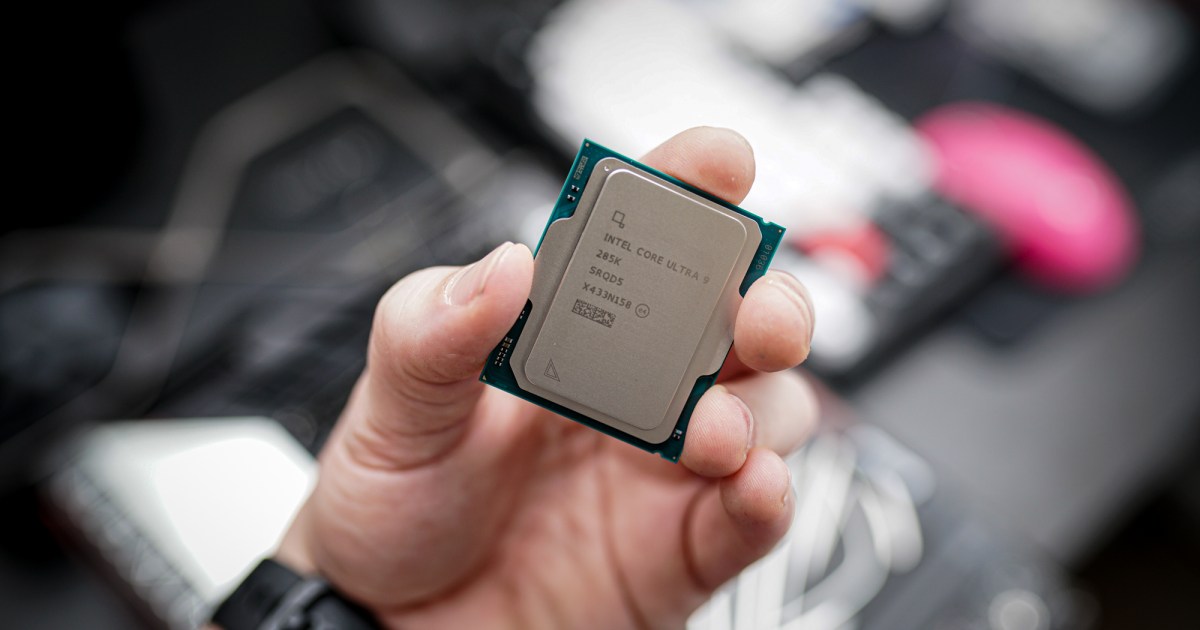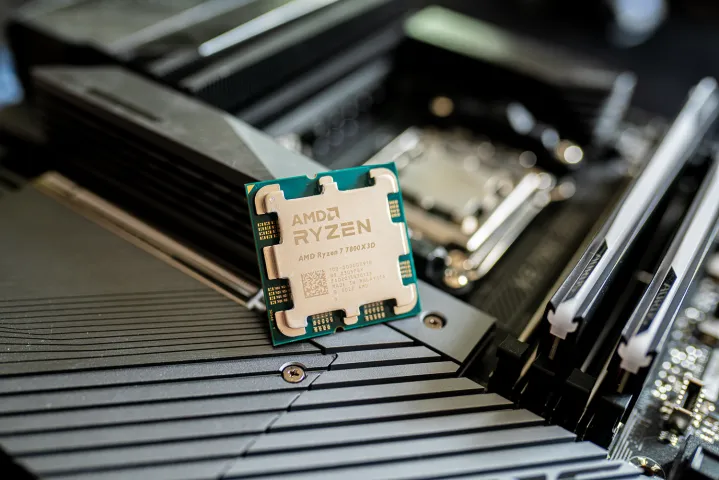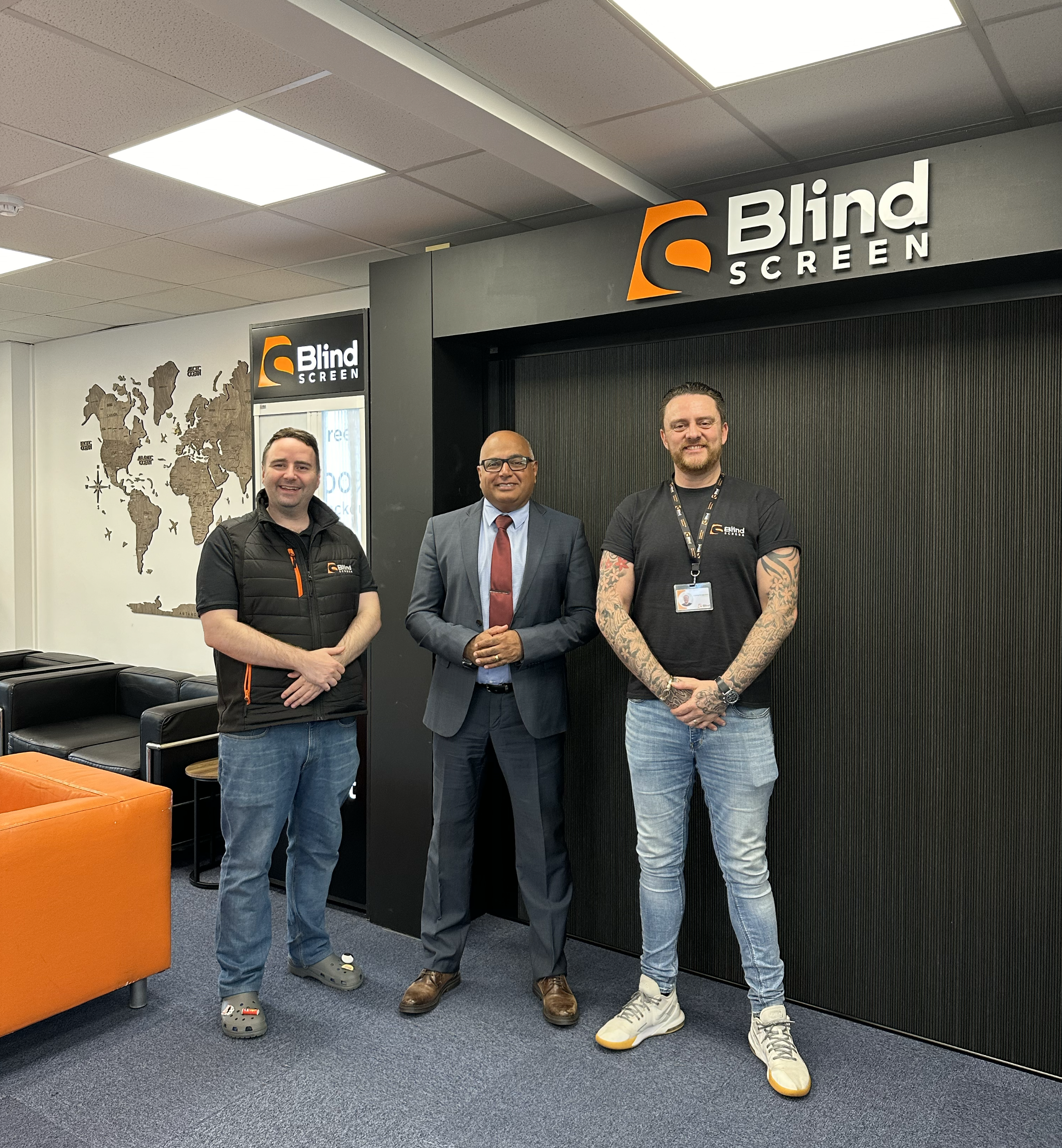Adobe is going all in on generative AI models and tools, even if that means turning away creators who dislike the technology. Artists who refuse to embrace AI in their work are “not going to be successful in this new world without using it,” says Alexandru Costin, vice president of generative AI at Adobe.
Technology
Andhra Pradesh showcases drone technology during recent floods as a success story- The Week

The ‘Amaravati Drone Summit 2024’ provided the perfect platform for Andhra Pradesh to highlight the successful use of drone technology during the recent floods that ravaged Vijayawada and surrounding areas.
AP Drone Corporation Managing Director, K. Dinesh Kumar, presented a comprehensive case study detailing the key role that drones played in the state’s flood disaster management and relief efforts.
Responding to the disaster, the state deployed 437 drones which completed 4000 trips. The exercise was undertaken by 846 skilled professionals. Drones became essential for real-time flood mapping, allowing authorities to monitor inundated areas and assess damage with speed and precision.
The state’s emergency response teams relied heavily on drone footage for quick decision-making, especially focusing on low-lying areas. According to the state government, a control room was established at the NTR District Collectorate, where 20 operators monitored live drone feeds from 22 flood-affected wards, identifying critical issues like crowd distress, garbage piles, dead animals and sanitation problems.
Over a six-day period, the drones delivered more than 1,23,731 relief packages to flood victims. On peak days, such as September 4, drones made as many as 80,630 deliveries. Not stopping at just that, 100 sanitation drones were deployed to spray 3,078 litres of disinfectant over 284 Km of flood-affected areas to prevent the outbreak of diseases.
The state leveraged Artificial Intelligence (AI) and Machine Learning (ML) for data analytics by processing information gathered from drone surveillance. Andhra Pradesh also launched a sandbox initiative that offered startups access to drone-collected data to create innovative solutions for disaster management. The Amaravati Drone Summit attracted over 11,000 attendees including 4,000 participants and 62 experts who doubled up as panel speakers.
Visuals of inundated roads and people trapped in houses crying for help dominated news channels and social media after the floods hit the southern state. The Krishna River was overwhelmed, resulting in the worst floods in the last 100 years. Rainfall of over 32 cm was recorded between August 31 and September 1 which displaced over 200,000 people. The floods also paralyzed transportation systems and crippled infrastructure as many commercial establishments were inundated by knee-deep water.
Technology
Adobe execs say artists need to embrace AI or get left behind

In an interview with The Verge, Costin said that he “isn’t aware” of any plans for Adobe to launch products that don’t include generative AI for creators who prefer to manually complete tasks or oppose how AI is changing the creative industry.
“We have older versions of our products that don’t use gen AI, but I wouldn’t recommend using them,” Costin said. “Our goal is to make our customers successful, and we think that in order for them to be successful, they need to embrace the tech.”
And according to Adobe’s President of Digital Media, David Wadhwani, the company is unlikely to accommodate creators who think otherwise.
“We’ve always innovated with conviction, and we believe in the conviction of what we’re doing here,” said Wadhwani, acknowledging that some creatives have loudly criticized Adobe’s adoption of generative AI technology. “People will either agree with that conviction or they won’t, but we think our approach is the one that wins frankly in the short term, but certainly in the long term.”
Adobe is in a difficult position — while many of its customers, particularly businesses and large creative teams, are hungry for AI features that can increase productivity, many artists openly detest the technology and fear how it will impact their livelihoods. Given the demand already exists, however, Adobe would be risking its dominant position in the creative software market if it ignored what many customers are asking for. If Adobe doesn’t develop these tools, other companies will, and they may not make the effort to do so in a way that respects artists’ work.
There are also communities of people online who harbor an extreme hatred of AI regardless of how it’s been applied, and will go out of their way to condemn and avoid interacting with it. For example, when a “shot-for-shot” remake of the Princess Mononoke movie trailer made with Kling recently went viral, it was briefly taken offline by its creator following intense backlash from fans of the original Hayao Miyazaki classic who felt the video was disrespectful or outright ugly.
But the generative AI features like those powered by Adobe’s Firefly models are the most adopted products Adobe has ever released, according to Wadhwani, which is all the signal the company needs to continue on the same path. There are plenty of generative AI models that already compete with Adobe’s Firefly lineup, from both heavy hitters like OpenAI and Google, and smaller niche startups that are trying to carve out their own place in the industry. And in many cases, Adobe is the one playing catch up. The forthcoming “Project Concept” collaborative canvas, which also includes text-to-image tools and an AI remixing feature, is similar to existing apps like Figma’s FigJam and Kaiber’s Superstudio, for example.
Adobe says it aims to implement AI in a way that gives artists more time to focus on actually being creative rather than replacing them entirely, such as making tools more efficient and removing tedious tasks like resizing or masking objects. The company is essentially trying to appeal to both sides by giving its AI tools very specific purposes inside its Creative Cloud applications, rather than pitching them as a means to replace every aspect of content creation.
“If you just rely on AI for all this stuff, you’re going to end up with a lot more content that looks like the same content everyone else is making.”
“We think that demand for content is insatiable. We also think that human creativity will be a critical part of it,” said Wadhwani. “If you just rely on AI for all this stuff, you’re going to end up with a lot more content that looks like the same content everyone else is making.”
What we’re likely to see is a greater divide between smaller artists and the wider creative industry. The demand for effectively every kind of content, from images and copy for advertising, to the TV shows and other media we consume, is growing rapidly. An Adobe survey reports that it increased two-fold between 2021-2023, and could increase up to 2000 percent by 2025, which is pushing companies to find new ways to affordably increase production.
Generative AI tools — many of which promise to automate repetitive or technically challenging tasks — are a highly appealing solution to meet such demands. But plenty of people still value the work that goes into manual creative processes, and I don’t see that going away entirely.
“I think there will be a thirst for artists who do things by hand,” said Wadhwani. “In the last decade I can take a picture and run it through a process that makes it look like a painting, but I’m not going to value that ‘painting’ the same way I would an artist who actually took the time to make a real painting.”
There’s little doubt that generative AI is changing the creative landscape though. Adobe says the technology will create new jobs, but those jobs will be different, and some specialized roles may disappear entirely. It’s also just difficult to avoid AI art generally these days — platforms like Etsy that were created for creators to sell hand-made wares are now inundated with it, and it’s harder for artists to find exposure online now they have to compete with AI content farms.
Adobe is the dominant provider of creative design software and few other companies provide a similarly connected ecosystem of products. That makes it hard for customers to simply jump ship if they don’t agree with the direction it’s taking, even if it is trying to be considerate about how generative AI is being implemented. But if its endorsement of AI ruffles enough feathers, then that could give way for new competitors to appease the users that Adobe is leaving behind.
And if the backlash presented by online creators is any indication, that’s a sizable market that Adobe is at risk of losing. It seems Adobe just thinks the opportunity that AI adopters present is even larger.
Technology
Your older LG OLED TV will soon be cursed with screensaver ads – here’s how to banish them

It’s already pretty hard to avoid being bombarded with TV ads, whether you’re watching Prime Video or pausing YouTube – and LG is now making things a little worse by bringing its pesky screensaver ads to older OLED TV models.
Last month, we reported that recent LG TVs, including premium OLEDs, were sneakily starting to show screensaver ads after sets had been left idle for a while. Some testing on our own LG G4 confirmed that to be the case. Now, FlatpanelsHD is reporting that those ads are rolling out to older models dating back to 2020, too.
If you own LG models like the LG GX OLED (2020), LG B1 OLED (2021) or LG B2 OLED (2022), you could soon see the screensaver ads turned on by default. It seems they’re also spreading to more recent models like the LG C4 OLED (2024), which is galling considering we consider it to otherwise be one of the best TVs you can buy.
Currently, the full-screen ads appear to be largely LG-related, promoting LG’s own channels. But an article from LG Ad Solutions previously suggested they could eventually be expanded to include third-party ones – and there’s evidence on Reddit that this might already be happening. Fortunately, there is a way to turn them off…
How to turn them off

There is currently a simple way to remove the default screensaver ads on your LG TV. Just go to Settings > General > System Settings > Additional Settings, then scroll down to the unsubtly-named Screen Saver Promotion. Toggle this off and you’ll be spared any more unsavory promos when your TV is idle.
Hopefully, this option will remain in the menus of LG TVs, because watching actual TV shows is quickly becoming a sideshow to being blasted with ads on many streaming platforms.
Earlier this month, the Financial Times reported that ads on Prime Video would “ramp up a little bit more into 2025” (according to Head of Prime Video International, Kelly Day). That follows the streaming service asking viewers to pay an extra $2.99/£2.99 a month to be spared from ads earlier this year.
But Prime Video and LG are far from alone, with YouTube recently introducing pause screen ads and Roku delivering Instagram-style shoppable ads to smart TVs. Let’s just hope the best smart glasses like the Meta Ray-Bans don’t start getting similar ideas.
You might also like
Technology
Cabinet approves Rs 1000 crore venture capital fund to boost space sector- The Week

India will get a Rs 1000 crore venture capital fund to boost the space sector. The fund aims to address the need for risk capital, as traditional lenders are hesitant to fund startups in this high-tech sector.
There are nearly 250 space startups emerging across the value chain which may need financial support, the cabinet note said.
This approval was given by the union cabinet on Thursday as part of its 2020 space sector reforms. Under these reforms, the government set up IN-SPACe to promote and oversee private sector participation in space activities.
The officials said the Rs 1000 crore venture capital fund would support the growth of India’s space economy, currently valued at S8.4 billion, with a target to reach $44 billion by 2033.
“The proposed government-backed fund will boost investor confidence, attract private capital, and signal the government’s commitment to advancing space reforms,” the cabinet statement said.
The proposed Rs 1,000 crore VC fund is planned to be up to five years from the actual date of start of the fund operations.
The average deployment amount could be Rs 150-250 crore per year, depending on the investment opportunities and fund requirements.
The government said the fund will create a multiplier effect by attracting additional funding for later-stage development, thereby instilling confidence in private investors along with retention of space companies domiciled within India. This will help counter the trend of Indian companies setting base abroad.
Technology
Intel Core Ultra 9 285K vs. Ryzen 7 7800X3D

Intel’s new Core Ultra 9 285K is finally here, promising a boost in performance with a significant reduction in power requirements, at least according to Intel. As you can read in my Core Ultra 9 285K review, Intel’s performance claims aren’t as rosy as reality, especially when stacked up against what is unequivocally the best processor for gaming you can buy: AMD’s Ryzen 7 7800X3D.
I threw both processors on the test bench to pit them head-to-head, looking at performance across productivity and gaming apps, as well as thermals and efficiency. These CPUs target different users, but there are still a lot of interesting comparisons we can look at between them.
Specs

The Core Ultra 9 285K and Ryzen 7 7800X3D are radically different CPUs, and that becomes clear when you compare their specs directly. Although it’s generally not a good idea to compare specs between two CPUs in the same class, the gap in specs here is so large that we can make some interesting observations. The main thing that’s different between the two CPUs is core count.
The Ryzen 7 7800X3D is a fairly straightforward chip in that regard. It comes with eight Zen 4 cores and a total of 16 threads, and it can boost up to 5GHz. That’s not what’s interesting about the CPU. It’s the 104MB of cache packed on top of the CPU die, split between 8MB of L2 cache and 96MB of L3 cache thanks to AMD’s 3D V-Cache packaging tech.
| Core Ultra 9 285K | Ryzen 7 7800X3D | |
| Cores/Threads | 24/24 (8P+16E) | 8/16 |
| Boost clock speed | 5.7GHz | 5GHz |
| Base clock speed | 3.7GHz | 4.2GHz |
| Cache (L2 + L3) | 76MB | 104MB |
| TDP | 250W | 120W |
| Price | $589 | $450 |
The Core Ultra 9 285K doesn’t have any fancy 3D V-Cache, but it still has a few tricks of its own. It’s a 24-core CPU, but unlike the Ryzen 7 7800X3D, it doesn’t come with simultaneous multi-threading (SMT). Each core only has a single thread. In addition, Intel uses its hybrid architecture, mixing together the Lion Cove P-core design with the Skymont E-core design. According to Intel, the E-cores are the main performance drivers here, unlike with the Core i9-14900K, where the E-cores were relatively weak.
With more cores and higher clock speeds, it shouldn’t come as a surprise that the Core Ultra 9 285K has much higher power requirements. I’ll address efficiency directly a bit lower down in this comparison, but I can tell you now that, under a full load, the Core Ultra 9 285K indeed draws twice as much (or more) power than the Ryzen 7 7800X3D — though usually with much better performance.
Pricing

The Core Ultra 9 285K and Ryzen 7 7800X3D force you to think about pricing because, depending on what you’re using your PC for, you can save quite a bit of money. The Core Ultra 9 285K is newer, and it’s the flagship chip from Intel’s latest range, so you’ll spend $589 if you want to pick it up now. The price will drop over time — the Core i9-14900K is about $450 a year after releasing — but until we see the next generation from Intel, you can expect to spend over $500.
The Ryzen 7 7800X3D is much cheaper at $450, though I’ve seen some strange price shifts with the CPU over the past several months. Just a few weeks before publishing this comparison, the Ryzen 7 7800X3D was sold out everywhere, and prior to that, you could commonly find it for around $320. Now, at the time of publishing, you’ll find it between $450 and $500, but I expect the price will drop very soon.
AMD has confirmed that its next-gen 3D V-Cache CPU is arriving on November 7, so depending on when you’re reading this, make sure to check in on the price of the Ryzen 7 7800X3D. If the new CPU is out by then, I expect we’ll see the price drop to around $350 to $400.
Even with its higher price, the Ryzen 7 7800X3D is significantly cheaper than the Core Ultra 9 285K — $139 cheaper, at least, and close to $239 cheaper if the Ryzen 7 7800X3D drops in price.
Productivity performance

Here’s some quick proof that the Core Ultra 9 285K and Ryzen 7 7800X3D are in completely different weight classes. As you can see from Cinebench R24 above, the Core Ultra 9 285K is much faster than the Ryzen 7 7800X3D — it’s not even close. Intel says this CPU is particularly strong in a ray-traced renderer line Cinebench, but even if you dropped 10% or 15% of the performance from the Core Ultra 9 285K, it would still be miles ahead of the Ryzen 7 7800X3D.

For more of a mixed-use benchmark, take a look at Geekbench 6. The Core Ultra 9 285K still runs away with multi-core performance, but the single-core delta is much smaller. And despite the clear lead in multi-core performance, that gap is smaller, too. Throughout my testing, one thing became clear — the Core Ultra 9 285K is really fast in certain applications, but that performance doesn’t apply everywhere.

A great example of that is Photoshop. You’d assume that the raw multi-core advantage of the Core Ultra 9 285K would mean it obviously wins against the Ryzen 7 7800X3D, but that’s not the case. In fact, the Ryzen 7 7800X3D is faster in Photoshop based on my testing. That’s not good considering the price and spec gap between these two CPUs. You’d expect the Core Ultra 9 285K to mop the floor with the Ryzen 7 7800X3D across all productivity applications.

In Premiere Pro, the Core Ultra 9 285K reclaims a dominant spot, but it really shouldn’t be this close. Not only is the Core Ultra 9 285K a much more capable CPU, it also has access to QuickSync in Premiere Pro, which speeds up performance significantly. The fact that these two CPUs are even competitive in Premiere shows how the performance of the Core Ultra 9 285K can be disappointing in certain apps.
Gaming performance

Gaming performance is where we see a more consistent divergence. The Ryzen 7 7800X3D crushes. Across the 10 games I tested, the Ryzen 7 7800X3D didn’t lose a single one. Sometimes it’s only showing a minor performance improvement, but in games like F1 22 and Cyberpunk 2077, the Ryzen 7 7800X3D provides a transformative uplift in gaming performance.
Not all games respond well to the additional cache on the Ryzen 7 7800X3D. As you can see from titles like Assassin’s Creed Mirage and Black Myth: Wukong, there’s some other factor limiting the performance of the processor — in most cases, your graphics card. However, other games can leverage the additional cache in quite a big way, as shown off by Final Fantasy XIV, Tiny Tina’s Wonderlands, and even Red Dead Redemption 2.
For the Core Ultra 9 285K, it can only hope to match the Ryzen 7 7800X3D, and in most games, it’s not even close to doing that. If you’re focused mainly on gaming, there’s really no contest here. The Ryzen 7 7800X3D absolutely crushes the Core Ultra 9 285K, and it’s significantly cheaper.
Thermals and efficiency

Another area where the Ryzen 7 7800X3D leads is efficiency. It not only has much lower rated power, it can also deliver higher performance in games while consuming less power. You can see that in action in the chart above. Looking solely at peak power draw during these games, the Ryzen 7 7800X3D stayed much more efficient under a heavy workload.
That’s not be critical of Intel. As you can see from the Core i9-14900K, Intel made massive efficiency improvements this generation, and it’s often able to deliver similar performance under 100 watts. But it’s still more power than the Ryzen 7 7800X3D, which rarely goes above 50 watts in games.

Temperature is a different story. On average, the Core Ultra 9 285K was a bit cooler than the Ryzen 7 7800X3D while playing games. It’s not a massive difference, but I tested with a 360mm all-in-one liquid cooler. In a small form factor PC, those temperature differences can really add up, and the Core Ultra 9 285K is set up to handle a more thermally constrained environment better.
It’s important to remember the design of 3D V-Cache CPUs. The cache is stacked directly on top of the cores, serving as an insolating layer between the cores and the integrated heat spreader (IHS). That’s why the Ryzen 7 7800X3D, and other 3D V-Cache CPUs, tend to run a bit hotter and why they aren’t unlocked for overclocking.
The gaming king reigns supreme

There’s really no contest here if you’re a gamer — the Ryzen 7 7800X3D is the way to go. It’s much faster, and it’s cheaper, and although productivity performance lags, the CPU still puts up a surprisingly impressive fight in apps like Premiere Pro and Photoshop.
The natural counter to that is productivity performance. If that’s what you care about, the Core Ultra 9 285K is the way to go. However, the inconsistent performance I saw with Intel’s latest CPU is worth keeping in mind. If you want good productivity performance and gaming in equal stride, I’d push you toward Intel’s Core i9-14900K or AMD’s latest Ryzen 9 9950X instead, the former of which is available for around $450.
Technology
iPhone 17 Pro Max rumored again to feature a narrower Dynamic Island

Technology analyst Jeff Pu suggests that the iPhone 17 Pro Max may feature a ‘much narrower’ Dynamic Island than its predecessors, such as the iPhone 16 Pro. This reiterates information that Pu first shared in May this year.
iPhone 17 Pro Max could use a new lens technology for Face ID
According to the analyst, the iPhone 17 Pro Max will adopt a ‘metalens’ for Face ID, which would result in a ‘much narrower’ Dynamic Island. For those curious, the ‘metalens’ is a thin, flat lens with microscopic patterns etched onto it, allowing it to focus light more precisely compared to the standard curved lenses of an iPhone. Unfortunately, Pu does not explain how Apple plans to implement this technology.
Apple introduced the Dynamic Island with the iPhone 14 Pro models, replacing the notch. Since then, the pill-shaped cutout has remained the same size across all models in the iPhone 15 and 16 lineups. If true, a narrower Dynamic Island would offer a refreshed look for the successor to the iPhone 16 Pro Max.
According to a previous report, the iPhone 17 Pro models may get notable zoom camera improvements. A recent report from The Elec also suggests that Apple could use the Watch Series 10’s LTPO3 display technology for future iPhones. While LTPO2 technology utilizes oxide for two switching TFTs, LTPO3 goes a step further by incorporating oxide into the driving TFT as well.
A more efficient display for future iPhones
LTPO3 allows displays to dynamically switch between refresh rates without the need for an additional component between the graphics controller and the GPU. As a result, LTPO3 panels consume less power than LTPO2 panels, even though both can reach as low as 1Hz.
This new display tech is also expected to offer improved viewing angles for future iPhones. For those interested in numbers, the Watch Series 10 (which uses LTPO3) is 40% brighter when viewed off-angle compared to its predecessor, which uses an LTPO2 display.
The improved power efficiency of LTPO3 technology could translate to longer battery life compared to iPhones with older display tech. However, the report does not specify when Apple might begin incorporating this new display technology into its iPhone lineup.
In terms of performance, the iPhone 17 Pro models will feature the A19 Pro chip. It utilizes TSMC’s 3nm process node and is likely to deliver better energy efficiency, faster processing, and improved overall performance.
Technology
University Research Validates Blind Screen™’s Game-Changing 49% Heat Reduction Technology in Race to Net Zero


A Derby company’s innovative window blind system has been scientifically proven to dramatically reduce heat loss in a series of tests carried out by researchers at the University of Salford.
Blind Screen™ is set to unveil its next-generation thermal solution, the Blind Screen™ 02 DT, at the prestigious British Blinds & Shutter Association Exhibition. The highly anticipated product launch will take place from October 27-29, 2024, at the Coventry Building Society Arena. This latest innovation builds upon the company’s scientifically proven thermal efficiency technology, promising to further revolutionise the window covering industry.
Blind Screen™ at Pride Park has invented an innovative contemporary multi-function blinds system which is manufactured in the UK and is now fitted by more than 1,000 national and independent blind companies across the UK.
Blind Screen™ products combine ultra-strength net and honeycomb fabrics with several unique features including 100% black out and thermal insulation technology with sideways opening fly, pollen and haze screens.
This not only increases the energy efficiency in any type of residential or commercial building but also protects against environmental pollutants and extreme outdoor temperatures.
The Blind Screen™ system was tested for heat retention at the University of Salford’s Energy House 2.0 test facility as part of Innovate UK Future Homes Study.
The rigorous tests showed that the Blind Screen™ system reduced heat loss by 49% compared with just double glazing alone – reinforcing Blind Screen™’s claim that it is probably the most thermally-efficient blind in the UK if not the world.
Professor Will Swan, Director of Energy House Labs at the University of Salford, explained: “Our work with Blind Screen™ is a perfect example of how the Future Homes Innovation Accelerator programme is supporting companies to innovate and grow.
“The development of new energy saving products is an essential step for the UK in meeting its Climate Change goals and minimising energy costs for householders.
“Our previous research in the area of blinds, curtains, and window coverings has demonstrated that they can make a valuable contribution to energy savings and reducing carbon emissions for householders.
“Blind Screen™ has recognised this opportunity and through working with the University of Salford and making use of our unique testing facilities, they have developed a class leading thermal window blind.
“We are very pleased with this successful outcome that will help cut energy bills and support the future growth of the company.
Blind Screen™ is the brainchild of entrepreneurs Lenny Reynolds, who has operated in the blinds industry for more than 20 years, and marketing and lead generation expert Paul Cheetham MCIM.
Lenny Reynolds explained: “Blind Screen™ offers a totally new category in the highly competitive industry which has been lacking any innovation since the launch and then mass production of shutters more than 20 years ago.
“We have developed the world’s first 100% blackout sideways motion blind with new thermal efficient fabric and we were keen to get this independently tested by the University of Salford.”
“The heat efficiency test results are amazing and reinforces what we and the growing number of blind fitting companies across the UK – and soon the world – already know that this is a game-changer in the blinds market.”
“This research further strengthens our position in the highly-competitive market and will pave the way for further research and development in new products which we plan to take worldwide through a number of top level partnerships.”
Paul Cheetham continued: “The past 12 months have been an amazing journey for Blind Screen™ so far, we have amassed a staggering worldwide audience of 1.4 Million followers and close to 800 million views across our social media platforms.
“After a series of soft launches at international trade shows and consumer exhibitions such as Grand Designs Live, we have already massively grown the company by teaming up with trade partners and educating the homeowners through organic social media with a huge following.
“We are committed to facilitating the growth of fellow small businesses who will sell and install Blind Screen™ in their local areas through unrivalled product design, training, lead generation and customer support and now have our sights set on international partnerships.”
Professor Kathryn Mitchell CBE DL, Vice-Chancellor, University of Derby added,
“It has been a pleasure supporting Blind Screen Limited in their innovation journey over the last 12 months through. The University of Derby’s College of Science and Engineering have provided guidance and expertise through our lead academics in Materials and Manufacturing Engineering and Zero Carbon for many aspects of the product development for their new range, including design, 3D printing and prototyping as well as thermal testing. Having just completed an Accelerated Knowledge Transfer Partnership with Blind Screen Limited, we are now excited to expand our collaboration and are looking forward to further supporting their journey and growth.”
Led by Innovate UK on behalf of UK Research and Innovation, the pilot Innovation Accelerator programme is investing £100m in 26 transformative R&D projects to accelerate the growth of three high-potential innovation clusters – Glasgow City Region, Greater Manchester and West Midlands. Supporting the Government’s levelling-up agenda, this is a new model of R&D decision-making that empowers local leaders to harness innovation in support of regional economic growth and help attract private R&D investment and develop future technologies.
-

 Technology4 weeks ago
Technology4 weeks agoIs sharing your smartphone PIN part of a healthy relationship?
-

 Science & Environment1 month ago
Science & Environment1 month agoHow to unsnarl a tangle of threads, according to physics
-

 Science & Environment1 month ago
Science & Environment1 month agoHyperelastic gel is one of the stretchiest materials known to science
-

 Science & Environment1 month ago
Science & Environment1 month ago‘Running of the bulls’ festival crowds move like charged particles
-

 Science & Environment1 month ago
Science & Environment1 month agoMaxwell’s demon charges quantum batteries inside of a quantum computer
-

 Technology1 month ago
Technology1 month agoWould-be reality TV contestants ‘not looking real’
-

 Science & Environment4 weeks ago
Science & Environment4 weeks agoX-rays reveal half-billion-year-old insect ancestor
-

 Science & Environment1 month ago
Science & Environment1 month agoSunlight-trapping device can generate temperatures over 1000°C
-

 Science & Environment1 month ago
Science & Environment1 month agoLiquid crystals could improve quantum communication devices
-

 Technology4 weeks ago
Technology4 weeks agoUkraine is using AI to manage the removal of Russian landmines
-

 TV3 weeks ago
TV3 weeks agoসারাদেশে দিনব্যাপী বৃষ্টির পূর্বাভাস; সমুদ্রবন্দরে ৩ নম্বর সংকেত | Weather Today | Jamuna TV
-

 Science & Environment1 month ago
Science & Environment1 month agoQuantum ‘supersolid’ matter stirred using magnets
-

 Science & Environment1 month ago
Science & Environment1 month agoLaser helps turn an electron into a coil of mass and charge
-

 News3 weeks ago
News3 weeks agoMassive blasts in Beirut after renewed Israeli air strikes
-

 Football3 weeks ago
Football3 weeks agoRangers & Celtic ready for first SWPL derby showdown
-

 Technology3 weeks ago
Technology3 weeks agoSamsung Passkeys will work with Samsung’s smart home devices
-

 News3 weeks ago
News3 weeks ago▶ Hamas Spent $1B on Tunnels Instead of Investing in a Future for Gaza’s People
-

 Science & Environment1 month ago
Science & Environment1 month agoA new kind of experiment at the Large Hadron Collider could unravel quantum reality
-

 Womens Workouts1 month ago
Womens Workouts1 month ago3 Day Full Body Women’s Dumbbell Only Workout
-

 Business3 weeks ago
Business3 weeks agoWhen to tip and when not to tip
-

 MMA3 weeks ago
MMA3 weeks ago‘Uncrowned queen’ Kayla Harrison tastes blood, wants UFC title run
-

 Sport3 weeks ago
Sport3 weeks agoBoxing: World champion Nick Ball set for Liverpool homecoming against Ronny Rios
-

 News3 weeks ago
News3 weeks agoNavigating the News Void: Opportunities for Revitalization
-

 Technology4 weeks ago
Technology4 weeks agoMicrophone made of atom-thick graphene could be used in smartphones
-

 Sport3 weeks ago
Sport3 weeks agoMan City ask for Premier League season to be DELAYED as Pep Guardiola escalates fixture pile-up row
-

 Science & Environment1 month ago
Science & Environment1 month agoPhysicists have worked out how to melt any material
-

 Science & Environment1 month ago
Science & Environment1 month agoWhy this is a golden age for life to thrive across the universe
-

 Science & Environment1 month ago
Science & Environment1 month agoQuantum forces used to automatically assemble tiny device
-

 News1 month ago
News1 month ago▶️ Hamas in the West Bank: Rising Support and Deadly Attacks You Might Not Know About
-
Business3 weeks ago
DoJ accuses Donald Trump of ‘private criminal effort’ to overturn 2020 election
-

 MMA3 weeks ago
MMA3 weeks agoPereira vs. Rountree prediction: Champ chases legend status
-

 News3 weeks ago
News3 weeks ago‘Blacks for Trump’ and Pennsylvania progressives play for undecided voters
-

 Sport3 weeks ago
Sport3 weeks agoWales fall to second loss of WXV against Italy
-

 MMA3 weeks ago
MMA3 weeks agoDana White’s Contender Series 74 recap, analysis, winner grades
-

 Sport3 weeks ago
Sport3 weeks agoAaron Ramsdale: Southampton goalkeeper left Arsenal for more game time
-

 Science & Environment1 month ago
Science & Environment1 month agoITER: Is the world’s biggest fusion experiment dead after new delay to 2035?
-

 Science & Environment1 month ago
Science & Environment1 month agoA slight curve helps rocks make the biggest splash
-

 Technology1 month ago
Technology1 month agoMeta has a major opportunity to win the AI hardware race
-

 Science & Environment1 month ago
Science & Environment1 month agoNerve fibres in the brain could generate quantum entanglement
-

 Science & Environment1 month ago
Science & Environment1 month agoHow to wrap your mind around the real multiverse
-

 Technology4 weeks ago
Technology4 weeks agoRussia is building ground-based kamikaze robots out of old hoverboards
-

 MMA3 weeks ago
MMA3 weeks agoJulianna Peña trashes Raquel Pennington’s behavior as champ
-

 Technology3 weeks ago
Technology3 weeks agoMusk faces SEC questions over X takeover
-

 Football3 weeks ago
Football3 weeks agoWhy does Prince William support Aston Villa?
-

 Technology3 weeks ago
Technology3 weeks agoThis AI video generator can melt, crush, blow up, or turn anything into cake
-

 Sport3 weeks ago
Sport3 weeks agoSturm Graz: How Austrians ended Red Bull’s title dominance
-

 News3 weeks ago
News3 weeks agoFamily plans to honor hurricane victim using logs from fallen tree that killed him
-

 Science & Environment1 month ago
Science & Environment1 month agoTime travel sci-fi novel is a rip-roaringly good thought experiment
-

 Science & Environment1 month ago
Science & Environment1 month agoNuclear fusion experiment overcomes two key operating hurdles
-

 Technology1 month ago
Technology1 month agoWhy Machines Learn: A clever primer makes sense of what makes AI possible
-

 News1 month ago
News1 month ago▶️ Media Bias: How They Spin Attack on Hezbollah and Ignore the Reality
-

 Money3 weeks ago
Money3 weeks agoWetherspoons issues update on closures – see the full list of five still at risk and 26 gone for good
-

 Technology3 weeks ago
Technology3 weeks agoThe best budget robot vacuums for 2024
-

 Technology3 weeks ago
Technology3 weeks agoGmail gets redesigned summary cards with more data & features
-
Business3 weeks ago
Sterling slides after Bailey says BoE could be ‘a bit more aggressive’ on rates
-

 Technology3 weeks ago
Technology3 weeks agoMicrosoft just dropped Drasi, and it could change how we handle big data
-

 Sport3 weeks ago
Sport3 weeks agoChina Open: Carlos Alcaraz recovers to beat Jannik Sinner in dramatic final
-

 MMA3 weeks ago
MMA3 weeks agoPereira vs. Rountree preview show live stream
-

 Sport3 weeks ago
Sport3 weeks agoCoco Gauff stages superb comeback to reach China Open final
-

 Entertainment3 weeks ago
Entertainment3 weeks agoNew documentary explores actor Christopher Reeve’s life and legacy
-

 Sport4 weeks ago
Sport4 weeks agoWorld’s sexiest referee Claudia Romani shows off incredible figure in animal print bikini on South Beach
-
Business3 weeks ago
Bank of England warns of ‘future stress’ from hedge fund bets against US Treasuries
-

 Business3 weeks ago
Business3 weeks agoChancellor Rachel Reeves says she needs to raise £20bn. How might she do it?
-

 News3 weeks ago
News3 weeks agoWoman who died of cancer ‘was misdiagnosed on phone call with GP’
-

 Technology3 weeks ago
Technology3 weeks agoTexas is suing TikTok for allegedly violating its new child privacy law
-

 Technology3 weeks ago
Technology3 weeks agoThe best shows on Max (formerly HBO Max) right now
-

 Sport3 weeks ago
Sport3 weeks ago2024 ICC Women’s T20 World Cup: Pakistan beat Sri Lanka
-

 Technology3 weeks ago
Technology3 weeks agoEpic Games CEO Tim Sweeney renews blast at ‘gatekeeper’ platform owners
-

 Science & Environment3 weeks ago
Science & Environment3 weeks agoMarkets watch for dangers of further escalation
-

 MMA3 weeks ago
MMA3 weeks agoAlex Pereira faces ‘trap game’ vs. Khalil Rountree
-

 News3 weeks ago
News3 weeks agoGerman Car Company Declares Bankruptcy – 200 Employees Lose Their Jobs
-

 MMA3 weeks ago
MMA3 weeks agoUFC 307 preview show: Will Alex Pereira’s wild ride continue, or does Khalil Rountree shock the world?
-

 MMA3 weeks ago
MMA3 weeks ago‘I was fighting on automatic pilot’ at UFC 306
-

 MMA3 weeks ago
MMA3 weeks agoKetlen Vieira vs. Kayla Harrison pick, start time, odds: UFC 307
-
News1 month ago
the pick of new debut fiction
-

 News1 month ago
News1 month agoOur millionaire neighbour blocks us from using public footpath & screams at us in street.. it’s like living in a WARZONE – WordupNews
-

 Football3 weeks ago
Football3 weeks agoSimo Valakari: New St Johnstone boss says Scotland special in his heart
-

 Technology3 weeks ago
Technology3 weeks agoJ.B. Hunt and UP.Labs launch venture lab to build logistics startups
-

 News3 weeks ago
News3 weeks agoHull KR 10-8 Warrington Wolves – Robins reach first Super League Grand Final
-

 Technology3 weeks ago
Technology3 weeks agoOpenAI secured more billions, but there’s still capital left for other startups
-
Business3 weeks ago
The search for Japan’s ‘lost’ art
-

 Business3 weeks ago
Business3 weeks agoStark difference in UK and Ireland’s budgets
-

 News3 weeks ago
News3 weeks agoBalancing India and China Is the Challenge for Sri Lanka’s Dissanayake
-

 News3 weeks ago
News3 weeks agoHeavy strikes shake Beirut as Israel expands Lebanon campaign
-

 TV3 weeks ago
TV3 weeks agoLove Island star sparks feud rumours as one Islander is missing from glam girls’ night
-

 TV3 weeks ago
TV3 weeks agoPhillip Schofield accidentally sets his camp on FIRE after using emergency radio to Channel 5 crew
-

 News3 weeks ago
News3 weeks agoHeartbreaking end to search as body of influencer, 27, found after yacht party shipwreck on ‘Devil’s Throat’ coastline
-

 Technology3 weeks ago
Technology3 weeks agoPopular financial newsletter claims Roblox enables child sexual abuse
-
Business3 weeks ago
Head of UK Competition Appeal Tribunal to step down after rebuke for serious misconduct
-

 Technology3 weeks ago
Technology3 weeks agoApple iPhone 16 Plus vs Samsung Galaxy S24+
-

 TV3 weeks ago
TV3 weeks agoMaayavi (මායාවී) | Episode 23 | 02nd October 2024 | Sirasa TV
-
Politics3 weeks ago
Rosie Duffield’s savage departure raises difficult questions for Keir Starmer. He’d be foolish to ignore them | Gaby Hinsliff
-

 Health & fitness3 weeks ago
Health & fitness3 weeks agoNHS surgeon who couldn’t find his scalpel cut patient’s chest open with the penknife he used to slice up his lunch
-

 Money3 weeks ago
Money3 weeks agoPub selling Britain’s ‘CHEAPEST’ pints for just £2.60 – but you’ll have to follow super-strict rules to get in
-

 Technology3 weeks ago
Technology3 weeks agoIf you’ve ever considered smart glasses, this Amazon deal is for you
-

 News3 weeks ago
News3 weeks agoLiverpool secure win over Bologna on a night that shows this format might work
-

 Technology3 weeks ago
Technology3 weeks agoAmazon’s Ring just doubled the price of its alarm monitoring service for grandfathered customers
-

 Technology3 weeks ago
Technology3 weeks agoHow to disable Google Assistant on your Pixel Watch 3
-
Business3 weeks ago
Can liberals be trusted with liberalism?
-

 Technology3 weeks ago
Technology3 weeks agoA very underrated horror movie sequel is streaming on Max


You must be logged in to post a comment Login